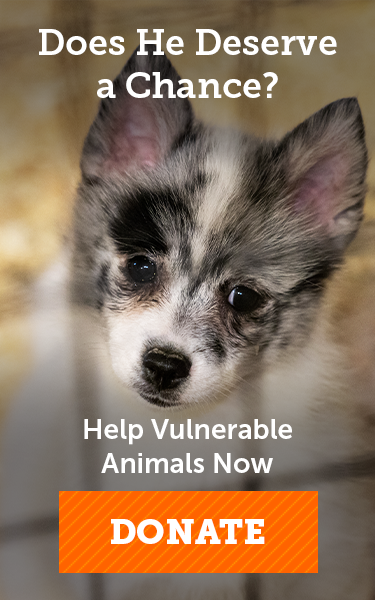
After Torn Ligament, ASPCA Surgeons Help Bootsy Heal

Bootsy, a six-year-old playful Poodle, often accompanies his family on short car trips, so when he leaped from the backseat after a recent errand, nothing seemed out of the ordinary.
The next day, however, Casaundra W. and her daughter, Bryanna B., of Jamaica, Queens, noticed Bootsy was limping and unable to bear weight on his right hind leg. They rushed Bootsy to a nearby vet clinic, which referred them to the ASPCA Animal Hospital where veterinarians diagnosed a torn anterior cruciate ligament, known in dogs as a cranial cruciate ligament (CCL) rupture.
Dr. J’mai Gayle, Director of Surgery at the ASPCA, repaired the torn ligament, which connects the back of the femur (thigh bone) with the front of the tibia (the bone below the knee) and helps keep the knee stable.

Bootsy is examined by Drs. Nicole Sarinsky and Surgery Director J’mai Gayle at the ASPCA Animal Hospital
“Torn cranial cruciate ligaments are one of the more common orthopedic problems we see,” says Dr. Gayle. “While some dogs can be treated conservatively with activity restriction and long term anti-inflammatory treatment, most dogs do much better over the long term if they have surgery.”
“Without surgery, dogs tend to have much more arthritis and are more prone to re-injury with activity,” she adds. And Bootsy is very active. “He’s busy as a bee, and happy,” says Casaundra, who adopted Bootsy as a puppy. “He was a dog no one wanted, the runt of the litter,” she explains.
At seven months, Bootsy was diagnosed with epilepsy. He takes daily medication to manage seizures, and also suffers from food allergies, separation anxiety and joint problems. Casaundra admits that she initially feared having to surrender Bootsy or possibly even put him to sleep because she didn’t want him to suffer. Yet, his prognosis for the CCL repair was good, according to Justin Berry, the ASPCA’s Director of Client Services, who helped arrange Bootsy’s surgery. “We wanted to help keep the family together,” he says.

Bootsy after his surgery.
Following Bootsy’s surgery, Casaundra, a hospital worker, and Bryanna, a day care assistant, managed his extensive recovery and physical therapy. “I carried him upstairs and wouldn’t let him jump on the sofa,” says Bryanna, 17. She and her mother also helped exercise Bootsy’s legs daily and applied cold compresses to his knee. “Someone was with him all the time,” Bryanna adds.
Bryanna’s grandmother also lives with the family, and after a recent hospitalization, returned home to convalesce. “Bootsy knew something was wrong with her,” says Casaundra. “He wouldn’t sleep in his bed. Instead, he slept next to hers. That’s unconditional love. He knows when we need it.”
Their bond goes both ways.
When it came time for Bootsy’s follow-up check-up, Bryanna took a day off from work to accompany her mother to the ASPCA. “He’s part of the family,” Bryanna says. “No one cares for him like we do.”

Bootsy and Bryanna before going home.
